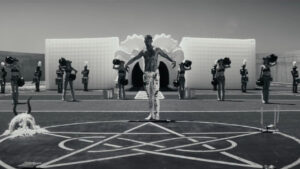In an era defined by the instantaneous nature of digital photography, a fascinating counter-trend is emerging, as reported by fstoppers.com. Young photographers, specifically Gen Z, are increasingly turning away from the immediacy and perfect precision of digital cameras and embracing the analog artistry of 35mm film. This resurgence, detailed in a recent article by fstoppers.com, signifies more than a mere nostalgic preference; it represents a deliberate choice reflecting a shift in artistic values and a desire for a more tactile, imperfect aesthetic. The appeal transcends mere photography; it speaks to a broader cultural yearning for authenticity and a conscious rejection of the hyper-curated perfection often associated with the digital realm. This trend is particularly intriguing within the luxury lifestyle sector, where authenticity and craftsmanship are paramount. The handcrafted nature of film photography aligns seamlessly with the values driving the demand for bespoke experiences and artisan-made goods within the high-end market.
Fstoppers.com highlights several key reasons for this shift. According to reporting from fstoppers.com, the tangible experience of using a film camera, the anticipation of developing the film, and the unique imperfections inherent in the process are all contributing factors. This deliberate slowing down of the creative process speaks to a broader cultural movement valuing mindfulness and intentionality. This is mirrored in the luxury market’s growing emphasis on artisanal production and the appreciation of handcrafted items. Consider the rise of bespoke tailoring, where the creation of a single garment involves weeks of meticulous craftsmanship, resulting in a final product that is uniquely tailored to the client’s preferences. Similarly, the deliberate imperfection inherent in film photography adds a unique character and a sense of exclusivity. This aligns with the recent trends seen in high-end fashion, particularly the rise of “raw” aesthetics and the embrace of visible stitching and deliberately imperfect detailing. The resulting rarity and individuality of a film photograph parallel the desirability of limited-edition luxury items.
Furthermore, fstoppers.com reports that the unique aesthetic qualities of film—the grain, the color palettes, the subtle imperfections—are highly valued by Gen Z photographers. This preference for a less-perfect, more “real” aesthetic reflects a broader rejection of digitally enhanced perfectionism prevalent in social media. This mirrors the luxury market’s subtle shift away from overly polished branding towards more authentic and transparent storytelling. For example, luxury brands are increasingly highlighting the stories behind their materials, production processes, and artisans. This transparency fosters a stronger connection with consumers who value authenticity and responsible consumption, echoing the sentiment behind the choice of film photography. As fstoppers.com describes, “the unpredictable nature of film adds to its allure,” a statement that resonates with the luxury consumer’s appreciation for unique and one-of-a-kind experiences. The inherent unpredictability of film creates a certain level of excitement, and the element of surprise in the outcome is becoming increasingly attractive in an era characterized by predictability and control.
The financial investment required for film photography, including the cost of film, development, and potentially even specialized cameras, contributes to its exclusive appeal. This aspect aligns perfectly with the luxury market’s often deliberate focus on creating a sense of exclusivity and rarity. This is evident in the rising demand for high-end, limited-edition products, which gain a significant amount of value not only for their intrinsic quality, but also for their exclusivity and rarity. The premium price associated with film photography helps establish a specific niche, attracting those who value both artistic expression and a unique form of self-expression. It can be viewed as a form of elevated self-expression, much like a collector who acquires rare art pieces, or a connoisseur who chooses to consume artisanal wines. This inherent connection with the luxury market extends beyond mere economic transaction; it represents a sophisticated form of artistic expression and status symbol, different from the digital democratization of images.
In conclusion, the resurgence of film photography amongst Gen Z, as covered by fstoppers.com, is not merely a nostalgic trend; it is a sophisticated cultural statement reflecting a desire for authenticity, craftsmanship, and a more deliberate creative process. This aligns perfectly with the values increasingly prized within the luxury market, signaling a potential expansion of the luxury aesthetic to embrace a more raw, less digitally mediated, yet profoundly artistic approach. The combination of tangible artistry, deliberate imperfection, and inherent exclusivity positions film photography as a luxury pursuit in itself, attracting a discerning clientele who value craftsmanship and appreciate the uniquely human touch inherent in this analog art form.
Originally reported by Why Gen Z Is Ditching Digital: 5 Reasons Film Photography Is Experiencing a Renaissance.
This article was created with assistance from AI technology and has been reviewed by our editorial team to ensure accuracy and compliance with our content standards.











